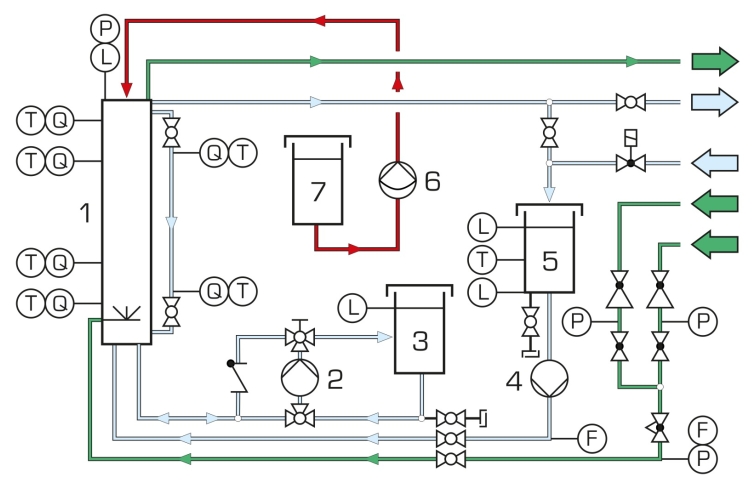Airlift reactors are submerged reactors in which the energy input is achieved by applying gas. Compressed air is often used as the gas.
During operation compressed air enters the airlift reactor at the bottom through the gas distributor. The added air mixes with the contents of the reactor and rises in the form of air bubbles. The rising air bubbles cause an upward flow. In doing so a portion of the oxygen in the air dissolves in the water. The area with the upward flow is called the riser. The remaining air bubbles leave the water at the top of the reactor. The gas-free liquid is fed back to the bottom section of the reactor in parallel to the riser. The area with the downward flow of an airlift reactor is called the downcomer. During operation the content of the reactor is recirculated through the riser and the downcomer. This recirculation is overlaid by perfusion in continuous operation. An additional tank with feed pump is provided for this purpose. The velocity of the circulation is set by the flow rate of the air.
The CE 730 trainer is designed for the study of characteristic properties of an airlift reactor with air, nitrogen and water. Applying air causes the oxygen content in the water to increase. It is possible to reduce the oxygen content in the water by using nitrogen. This is the prerequisite for determining the mass transfer coefficient of oxygen in water. The liquid superficial velocity is determined by measuring the electrical conductivity. A metering pump and a tank for a salt solution are provided to increase the electrical conductivity. The mixing time is determined by an indicator. The gas content is determined by the level in the airlift reactor.
The measured values are displayed digitally on the switch cabinet and can simultaneously be transmitted via USB directly to a PC, where they can be analysed using the software included.


















